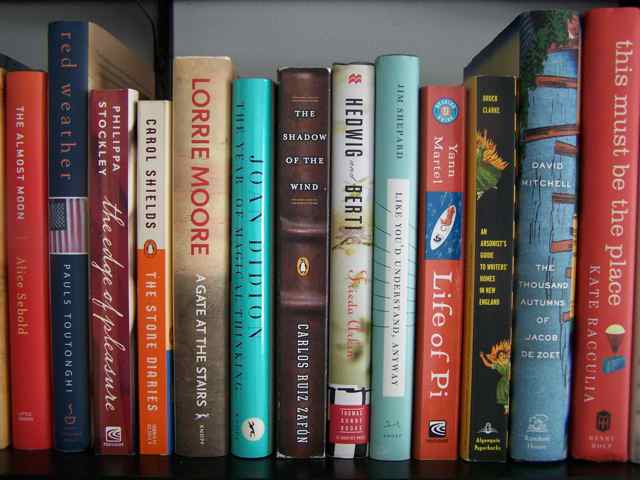 What the Nanny Saw by Fiona Neill is a nanny’s-eye view of the greedy excesses of bank executives, stock market traders, and others in London’s financial sector during the two years leading up to the global economic collapse in 2008, but the bestselling author of Slummy Mummy doesn’t quite succeed in merging several intriguing scandals and story lines into a single compelling novel.
What the Nanny Saw by Fiona Neill is a nanny’s-eye view of the greedy excesses of bank executives, stock market traders, and others in London’s financial sector during the two years leading up to the global economic collapse in 2008, but the bestselling author of Slummy Mummy doesn’t quite succeed in merging several intriguing scandals and story lines into a single compelling novel.
Taking a year off from the University of East Anglia and becoming a nanny for a year to earn enough money to finish her college degree strikes 22-year-old Ali Sparrow as a reasonable idea in August of 2006. Especially as her only viable alternative seems to be joining her friend Rosa in the Sugar Daddies, an escort-with-benefits service.
High-powered executives in their respective fields of finance and public relations, Nick and Bryony Skinner need more than just their live-in Filipina housekeeper for all the daily chauffeuring, chaperoning, coaching, and coaxing duties involved in raising four children. Ali (representing the 99%) lands the job as nanny to Nick and Bryony Skinner’s four above-average children: Jake (age 18, underachieving and hot), Izzy (age 15, rebellious with a borderline eating disorder), and identical twins Hector and Alfie (age 5, and inseparable.) Wealthy strivers and social climbers, Nick and Bryony – though not yet in the tip-top of the 1% themselves – can see it from their impressive Holland Park Crescent home.
Fiona Neill’s first novel, Slummy Mummy, was an hilarious send-up of competitive motherhood. While still funny, What the Nanny Saw suffers from comparison with Slummy Mummy‘s sizzle and snark. The author is great at composing humorous scenarios and dialogue, and finds plenty of material in Ali’s navigation of her newly intersecting worlds, including:
1.) the Eastern European “nanny mafia” (as Bryony calls it) gathering in cafes with children in tow to gossip about their rich employers and compare notes on treatment of the household help;
2.) Nick and Bryony’s social and professional circle (“millionaires complaining about billionaires,” as Bryony’s father, self-made salmon industry magnate, observes at a party);
3.) Jake and Izzy’s privileged bubble of adolescence, so different from Ali’s teenage years;
4.) Ali’s own struggling family, back home in Cromber, an economically depressed seaside town.
Here’s a sample from early on in What the Nanny Saw. Ali is interviewing in the Skinners’ elegantly appointed dining room with Bryony (a model of efficient parenting) and Nick, (friendlier, more laid-back, distracted by his Blackberry):
“Apart from babysitting, do you have any experience with children?” Bryony asked.
Ali started to explain how, as part of a program to reduce teenage pregnancy, girls at her school had all been given a fake baby to look after for a day. The doll was programmed to cry if it wasn’t fed or its nappy wasn’t regularly changed. She had proven to be totally responsible.
“What about the other girls in your class?” asked Nick.
“One of them dropped the doll off the end of the pier by mistake, and another was already pregnant and it made her lactate,” said Ali, pleased to find a verb that was suitably scientific.
Nick and Bryony stared at her in silence for a moment. “We’re not familiar with this program,” Nick said finally, and smiled. Bryony looked nonplussed.
A popular London Times columnist, Fiona Neill airs ethical/moral dilemmas and exposes stereotypes of people in different social classes in a humorous way. Unfortunately, the humor in What the Nanny Saw gets weighed down by the burdensome message that corporate greed and economic inequality are bad. I’ll still keep an eye out for her next novel, though.
Disclosure: I received an advanced reading copy of this book from the publisher through LibraryThing’s Early Reviewers program in September after the book was already published.
What the Nanny Saw
Neill, Fiona
Riverhead Books
August 2012
978-1-59448-716-3
$26.95 U.S., $28.50 CAN
